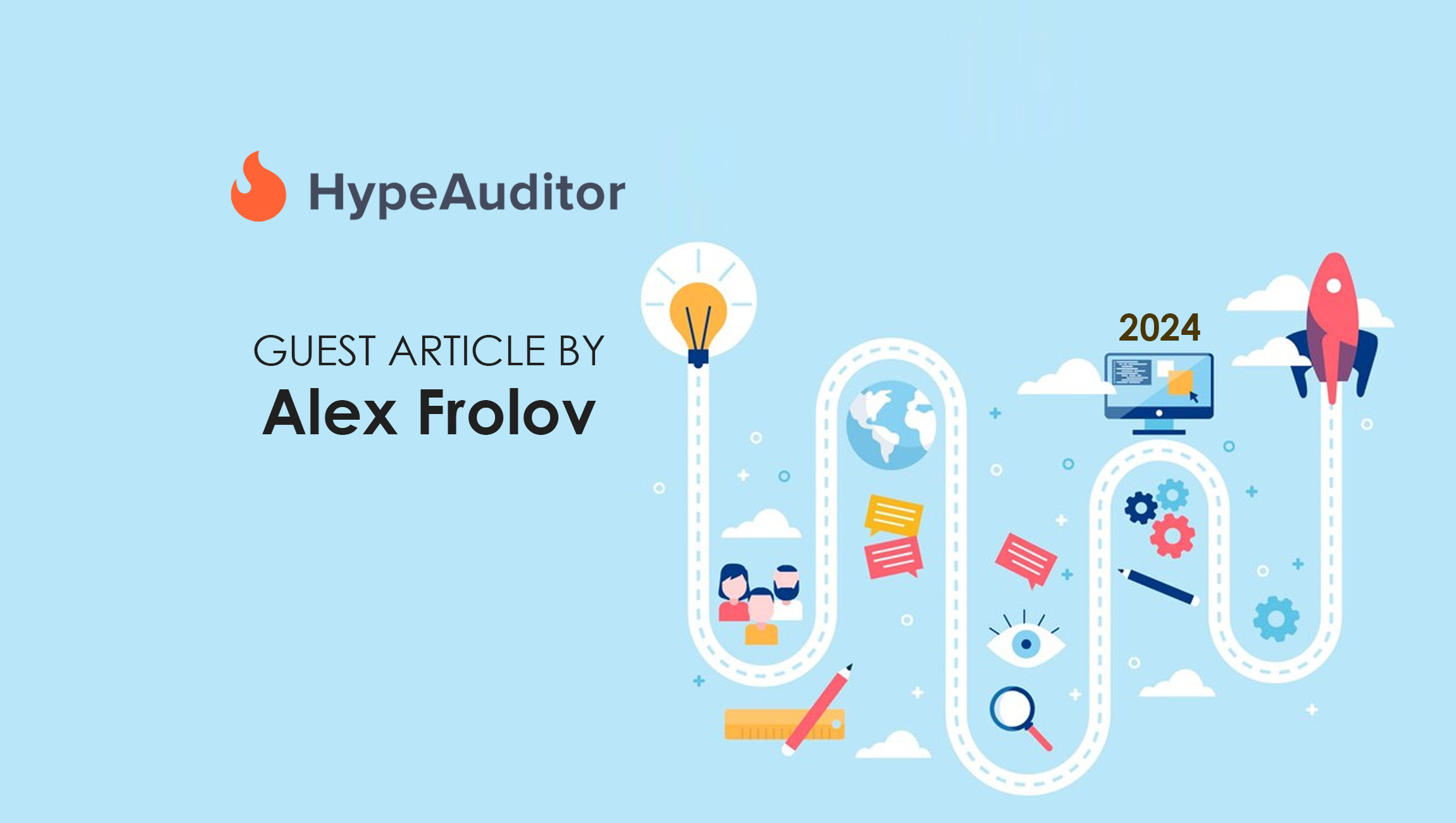The influencer marketing landscape is overflowing with potential for innovation and change. 2023 was the year generative AI made a dramatic debut, striking both fascination and concern, as demonstrated by the rise of AI social media influencers. This year, HypeAuditor predicts that global spending on Instagram influencer marketing will reach a whopping £15.5 billion in 2024.
As an industry which is always on the move, the influencer marketing landscape is gearing up to embrace some changes in 2024, bringing new opportunities to brands and creators alike.
AI will mark another milestone in the maturity of the influencer marketing industry.
2023 marked the start of influencers and marketers embracing the opportunity brought by AI, for instance to develop content or to gain insights and ensure the efficiency of campaigns. This is just the beginning of what will be endless possibilities for influencers and brands. For those who do not adopt AI, irrelevancy seems to be just around the corner.
AI marks a milestone for the influencer marketing industry which will mature further as we uncover further advancements in AI. With AI, brands can make better informed decisions when selecting the right influencers to work with, better protecting themselves from the risk of fraud. We can also expect that, as influencers become more reliant on the use of AI tools, partnerships between influencers and technology companies will likely increase in the near future.
The rise of virtual influencers in the era of AI
Along with creating opportunities for influencer-brand collaborations, the latest advancements in AI will shape a new era for virtual influencers, one where we can expect to see an increase in their numbers and a heightened level of complexity in their persona.
In this era, brands will be able to take advantage of this evolution, for instance being able to incorporate a distinctive personality, chat bots, extensive brand and product knowledge, text-to-voice synthesis, multilingual translation, and voice modulation all in one influencer. Despite this growing community, human influencers will likely continue to wield greater influence over audiences, especially as virtual influencers are often placed in a grey area. Despite its benefits, brands face the risk that social media users may not understand why the brand needs a virtual influencer. Adopting a virtual influencer should not be a whim of brand marketers who follow trends, there must be a clear understanding of trust, transparency and ethical use
Marketing Technology News: MarTech Interview with Brand Metric’s Robby Kraai
The leap from influencer to entrepreneur
As the industry continues to mature, influencers are increasingly being recognised for their professionalism, often working with a team of editors, videographers, and advisers to create content. Most successful influencers have shifted to entrepreneurship, now owning their own brands, curating their own images and selling their own merchandise – like Huda Kattan, the beauty influencer turned entrepreneur with a cosmetics business now worth more than $1bn and the biggest make-up brand on Instagram, with more than 50 million followers. This makes them almost equals of brands, and not as dependent on deals. As a result, marketers will have to go the extra mile and seek out opportunities to co-create content that works for both parties when aiming to collaborate with a successful influencer.
The production studio in your back pocket
With the help of AI and never-ending technological innovations, our mobile phones and computers have become accessible production studios. Bridging the gap for anyone hoping to get into content creation. Influencers have understood this well, according to one of our recent surveys, 72% of influencers, globally, wish to upgrade their phones with most (40%) longing towards Apple’s latest model, the iPhone 15 Pro Max, to access the latest features, in particular its camera quality, video capabilities. Content will only get better and of higher quality, both from niche influencers to more established influencers.
Ad- free subscriptions steer marketers towards influencer collabs
Meta has begun offering ad-free subscription options to Instagram and Facebook, allowing users in Europe to scroll through their content without seeing any ads. This follows the EU’s concerns around data collection and privacy practices. While Ad-free subscriptions may be beneficial to users looking for more privacy, it will likely have much deeper implications for influencer marketing in the EU and worldwide. Ad-free subscriptions will inherently result in a decrease in traditional ad spending from brands on these platforms. In turn, this will increase brand–influencer collaborations in hopes of keeping brands relevant and present for those who opt-out of platform ads.
This year, it will be critical for marketers, influencers, and brands alike, to remain both connected and responsive to ever-changing trends. It’s all about being prepared for the new and the unexpected. Content creation is no longer a hobby but a profession. By understanding and utilising its evolving landscape, marketers can tap into the benefits of influencer marketing, seizing opportunities as they come.
Marketing Technology News: How Does Your Business Stack Up Against the Competition?
Missed The Latest Episode of The SalesStar Podcast? Have a quick listen here!
Episode 195: Data Best Practices for Modern Marketing and Sales with Ana Mourao, CRM Sr. Manager at Stanley Black and Decker Inc.
Episode 194: AI’s Influence on Travel and Hospitality with Toby Korner, SVP, Digital Marketing at Priceline
Episode- 193: A Chat on AI with Debbie Braney, Vice President, Demand & Brand Marketing at Glassbox











